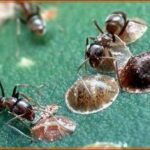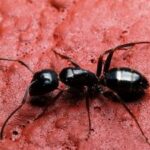Nearly one hundred years has past since the immune system of invertebrates was discovered. Since that time, however, the understanding of this immune system has remained quite elusive. Recently, a team of researchers from the European Science Foundation has realized that the invertebrate immune system is anything but simple, despite the critters’ small size and simplistic body design.
An invertebrate is any animal that does not a have a backbone. When most people think of invertebrates, they think of bugs like ants and cockroaches. But even crabs and lobster are considered invertebrates. In fact, it has been said that the lobster is the cockroach of the sea. Nonetheless, when the Russian scientist Elie Metschnikow first uncovered that these creatures have immune systems, he saw what he called phagocytosis, or the process of one cell eating another cell.
As it turns out, phagocytosis is a very important part of the immune system’s ability to keep the body healthy. Since Metschnikow’ s work one hundred years ago, scientists have been studying simpler organisms’ immune systems, like invertebrates, in order to better understand our own immune systems. But over the years, researchers have realized that these miniscule immune systems are much more complex than previously thought.
Recently, scientists have uncovered new molecules that aid in the destruction of harmful pathogens in invertebrates’ bodies. One molecule, called Dscam, can actually fold itself into over 18,000 different shapes, making it extremely effective in recognizing and binding itself to various pathogens with the ultimate goal of destroying the pathogen. This type of “specific germ recognition” was thought to be exclusive to vertebrates, until now.
Scientists have also found that invertebrates employ rather sophisticated ways of keeping their immune system in balance. For instance, in certain invertebrates, the body can recognize peptidoglycan, which is a component of bacterial cell walls. This recognition then produces a rapid immune response that kills the bacteria. However, after the bacteria are killed, certain molecules digest the left-over peptidoglycan to ensure that the body does not continually attack itself. In humans, when the body fails to recognize certain cells, it attacks them, resulting in autoimmune diseases like Crohn’s disease, which is when the body attacks the intestinal cells. By researching these immune responses in invertebrates, scientists might be able to engineer better, more effective drugs for such human autoimmune diseases.
Many bugs also “prepare” their immune systems for a pathogen invasion. For instance, female bedbugs are often wounded during mating. As such, they augment their immune systems to battle a possible pathogen invasion through their wounds. Bumblebees permanently increase their immune system after they have been infected by a germ. This then helps protect them from future infections.
As scientists continue to study invertebrate immune systems, they realize more and more than these systems may rival our own in their complexity and effectiveness. By better understanding these immune systems, scientists may get a head start on understanding our own.
Source: Richard York, “Invertebrate Immune Systems Are Anything But Simple.” ScienceDaily. URL: (http://www.sciencedaily.com/releases/2007/06/070621102626)






